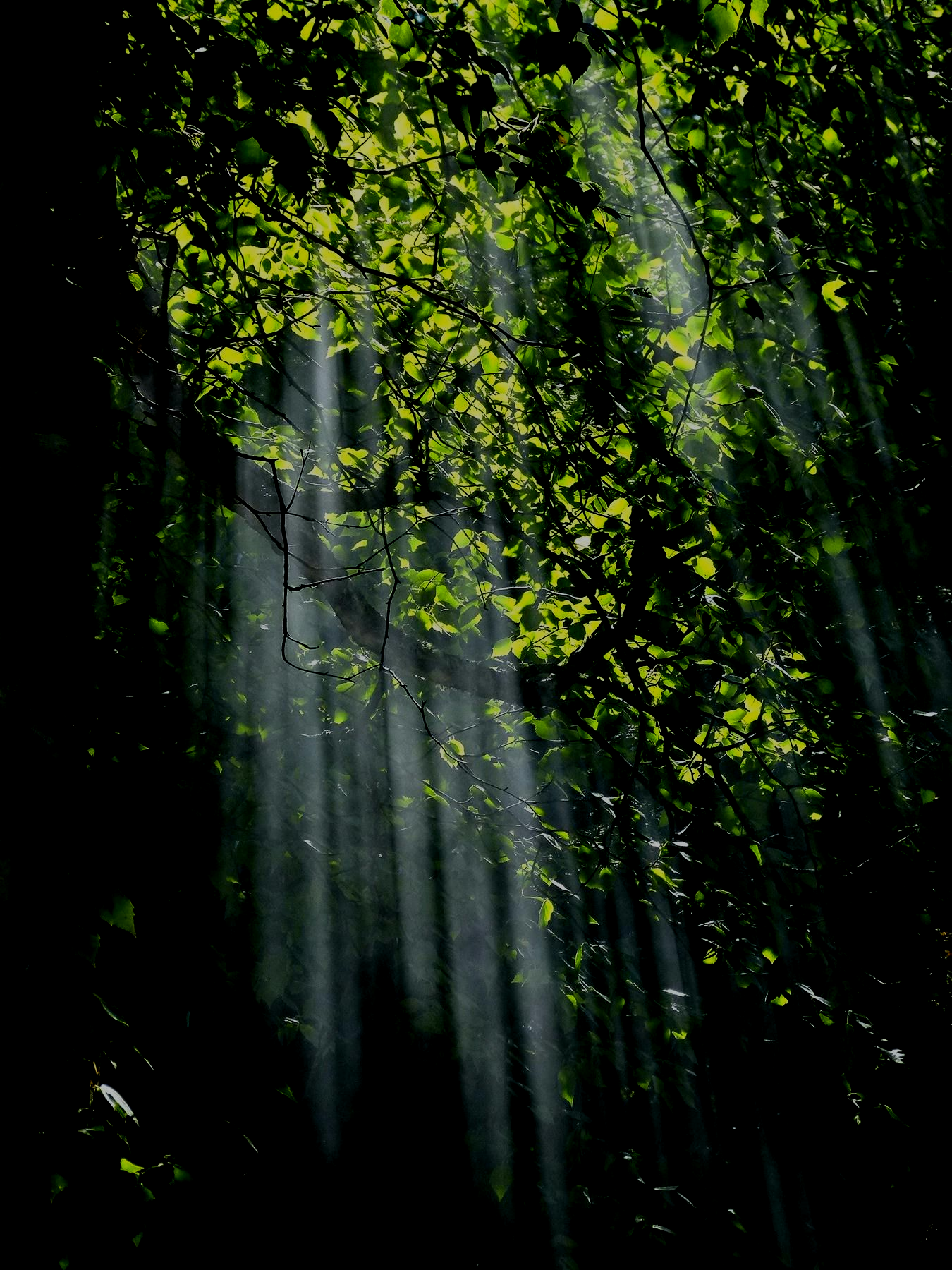How much Co2 does a tree absorb?
The variables involved in tree growth and Co2 absorption are many.
Introduction
Climate change is one of the most pressing challenges of our time, driven primarily by the accumulation of greenhouse gases such as carbon dioxide (CO₂) in the atmosphere. Human activities — particularly the burning of fossil fuels and land-use change — release billions of tonnes of CO₂ each year, intensifying the greenhouse effect and warming the planet. While technological solutions to reduce emissions are advancing, nature itself remains one of the most effective and accessible tools for regulating Earth’s climate. At the heart of this natural regulation lies the ability of trees to absorb CO₂.
Trees, through the process of photosynthesis, act as biological carbon pumps, drawing carbon dioxide from the air and storing it in their trunks, branches, leaves, and roots. This natural function makes forests crucial to global climate stability. The following article explores in depth how trees absorb CO₂, the science behind this process, the scale of their impact, the factors influencing absorption, and the role of forests in climate change mitigation.
The Science of CO₂ Absorption in Trees
Photosynthesis: The Engine of Carbon Capture
At the most fundamental level, trees absorb CO₂ through photosynthesis. In this process, trees use sunlight as an energy source to convert carbon dioxide from the atmosphere and water from the soil into glucose (a form of sugar) and oxygen. The simplified formula for photosynthesis is:
6CO2+6H2O+sunlight→C6H12O6+6O26CO₂ + 6H₂O + sunlight \rightarrow C₆H₁₂O₆ + 6O₂6CO2+6H2O+sunlight→C6H12O6+6O2This chemical equation shows how six molecules of carbon dioxide combine with six molecules of water, using light energy, to form one molecule of glucose and six molecules of oxygen. While the oxygen is released into the atmosphere, the glucose is used by the tree for growth and metabolic functions.
Carbon Storage in Biomass
The carbon absorbed by trees is not only used immediately for energy. Much of it is stored in the tree’s biomass — its roots, trunk, branches, and leaves. This storage can last decades, centuries, or even millennia, depending on the species of tree and the stability of the forest ecosystem. Some of the carbon also enters the soil through fallen leaves, branches, and root turnover, where it can be stored for even longer.
Sequestration and the Carbon Cycle
Trees are thus a vital part of the global carbon cycle, which regulates how carbon moves between the atmosphere, oceans, soil, and living organisms. Forests act as carbon sinks, removing more carbon from the atmosphere than they release. Without forests, atmospheric CO₂ levels would be substantially higher, and global warming would be far more severe.
How Much CO₂ Do Trees Absorb?
Absorption by Individual Trees
The amount of CO₂ a single tree can absorb varies widely depending on species, age, size, and growing conditions. On average:
- A young tree may absorb 5–10 kilograms of CO₂ per year.
- A mature tree can absorb around 20–25 kilograms per year, with some large tropical species sequestering significantly more.
- Over its lifetime, a single tree might sequester one tonne of CO₂ or more, though this figure depends heavily on lifespan and growth rate.
Forest-Level Absorption
When considered collectively, forests are immense carbon reservoirs. Globally, forests absorb about 2.6 billion tonnes of CO₂ per year, according to estimates from the Intergovernmental Panel on Climate Change (IPCC). This offsets roughly one-third of annual CO₂ emissions from fossil fuels.
Tropical vs. Temperate vs. Boreal Forests
- Tropical forests (such as the Amazon, Congo Basin, and Southeast Asia) are the most productive carbon sinks due to their rapid growth rates, warm climates, and high biodiversity.
- Temperate forests absorb less per hectare than tropical forests but still play a crucial role, especially in North America, Europe, and parts of Asia.
- Boreal forests (in Canada, Russia, and Scandinavia) cover vast areas and store enormous amounts of carbon, particularly in their soils, though their growth is slower due to cold climates.
Factors Influencing CO₂ Absorption
Several factors determine how effectively trees can absorb and store carbon:
1. Species Type
Some tree species grow quickly and capture carbon rapidly (e.g., eucalyptus, poplar), while others grow slowly but store carbon for much longer (e.g., oak, redwood). Biodiverse forests often provide more resilient and long-term carbon storage than monoculture plantations.
2. Age of Trees
Young trees grow quickly and absorb carbon at a faster rate relative to their size, but older, mature trees store much larger total amounts of carbon over their lifetimes. Research shows that some very large, centuries-old trees continue to absorb significant amounts of CO₂ even late in life.
3. Soil and Climate Conditions
Nutrient-rich soils, adequate water supply, and favorable climates enhance growth and carbon uptake. Conversely, droughts, poor soils, or extreme weather can slow or even reverse carbon sequestration.
4. Disturbances and Degradation
Wildfires, pests, disease, and human activities such as logging or land conversion can release stored carbon back into the atmosphere, turning forests from carbon sinks into carbon sources. The Amazon rainforest, for instance, has in some areas shifted from absorbing carbon to emitting it due to deforestation and climate stress.
Trees in the Global Climate Strategy
Mitigation Through Afforestation and Reforestation
Planting new forests (afforestation) and restoring degraded ones (reforestation) are widely promoted as strategies to increase carbon sequestration. Initiatives such as the Bonn Challenge and the Trillion Trees Campaign aim to restore millions of hectares of forest globally.
Nature-Based Solutions
Forests are at the core of nature-based solutions (NbS), which integrate natural ecosystems into climate strategies. Protecting and expanding forests can provide up to 30% of the mitigation needed to limit global warming to 1.5°C, according to the IPCC.
Carbon Offsetting Programs
Carbon offsetting schemes often rely on tree planting or forest protection to compensate for emissions elsewhere. Programs certified by standards such as Gold Standard or Verra ensure that forestry projects deliver verified and long-lasting carbon benefits, in addition to supporting biodiversity and local communities.
Beyond Carbon: The Co-Benefits of Trees
While CO₂ absorption is a central climate function, trees provide numerous additional benefits that strengthen their importance in sustainability strategies:
- Air quality improvement: Trees filter pollutants like nitrogen dioxide, ozone, and particulate matter.
- Water regulation: Forests enhance water cycles, prevent soil erosion, and reduce flood risk.
- Biodiversity habitat: Forests house over 80% of terrestrial species of plants, animals, and fungi.
- Human well-being: Urban trees reduce heat islands, provide recreational spaces, and improve mental health.
- Economic resources: Sustainable forestry supports livelihoods, timber production, and non-timber products.
These co-benefits underscore why protecting and restoring forests is not only a climate imperative but also a foundation for human and ecological well-being.
Limitations and Challenges
While trees are essential for absorbing CO₂, they are not a silver bullet solution. Several challenges must be considered:
- Permanence risk: Carbon stored in trees can be re-released through deforestation, wildfires, or decay.
- Land competition: Large-scale tree planting can compete with agricultural land needed for food production.
- Monoculture risks: Planting single-species forests can reduce biodiversity and increase vulnerability to disease.
- Delayed impact: Newly planted trees take decades to reach their full carbon absorption potential, whereas emissions reductions from cutting fossil fuel use are immediate.
Thus, while trees are vital, they must complement — not replace — aggressive reductions in fossil fuel emissions.
Conclusion
Trees play an indispensable role in mitigating climate change by absorbing CO₂ through photosynthesis and storing carbon in their biomass and soils. Forest ecosystems collectively sequester billions of tonnes of carbon annually, acting as buffers against the worst effects of human-induced warming. The capacity of trees to regulate climate is influenced by factors such as species type, age, soil, and management practices.
Beyond their role in carbon absorption, trees provide a wealth of co-benefits that support biodiversity, water cycles, air quality, and human well-being. However, challenges such as permanence risks, land competition, and ecosystem vulnerabilities remind us that trees alone cannot solve the climate crisis.
Ultimately, the most effective path forward combines protecting existing forests, restoring degraded ones, and integrating trees into broader climate strategies, while simultaneously pursuing deep reductions in fossil fuel emissions. Trees may not be the only answer, but they remain one of the most powerful allies humanity has in the fight against climate change.





